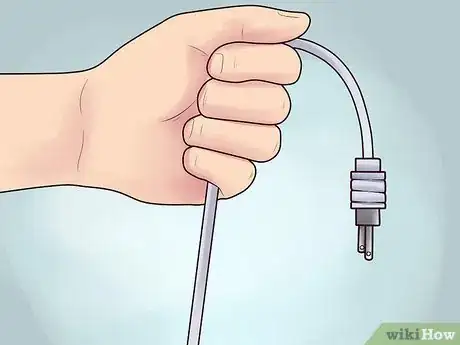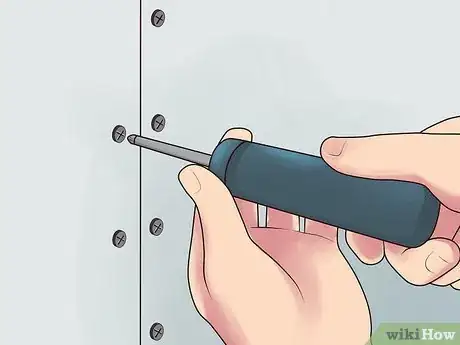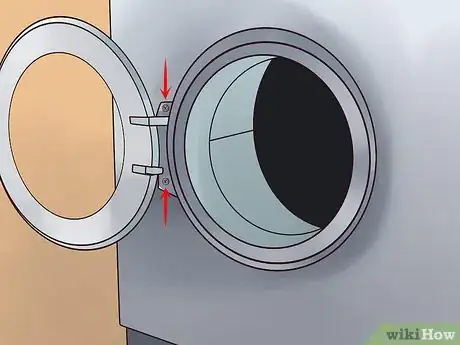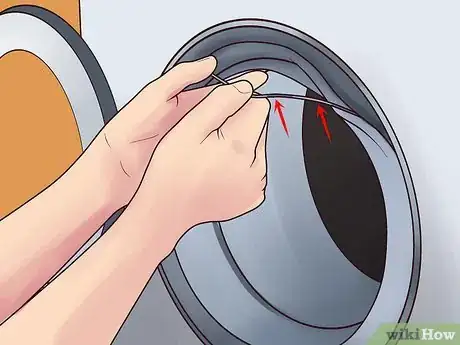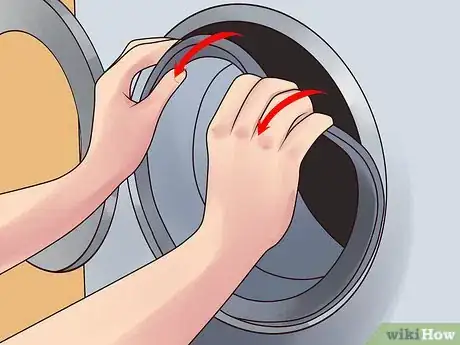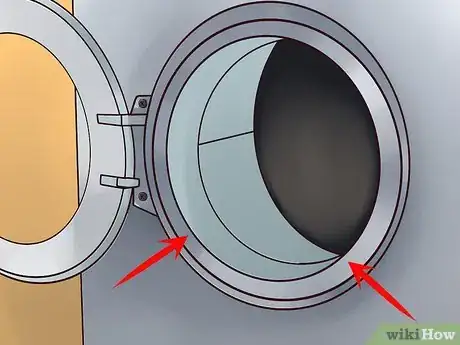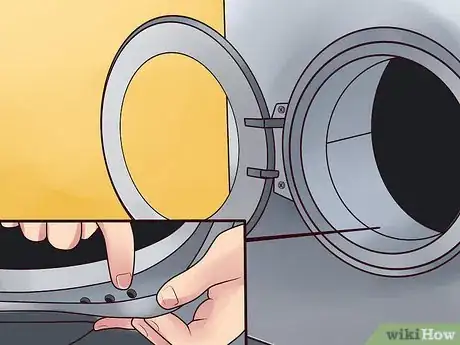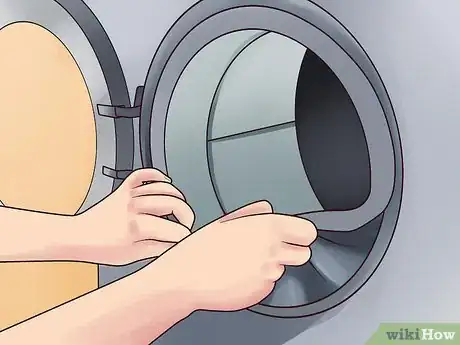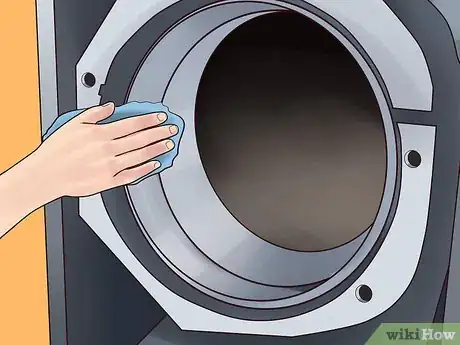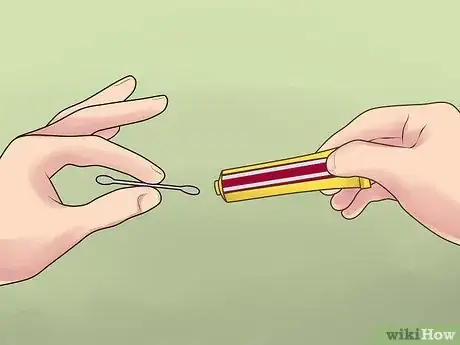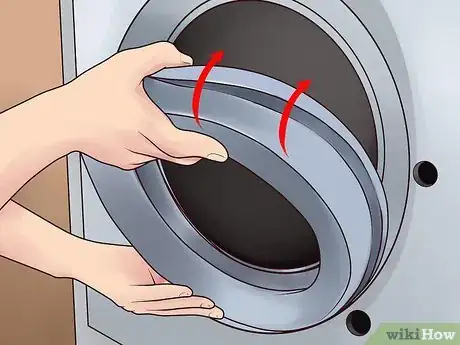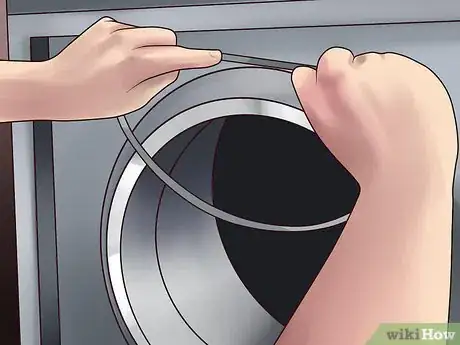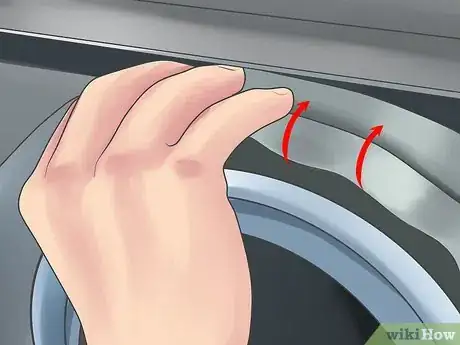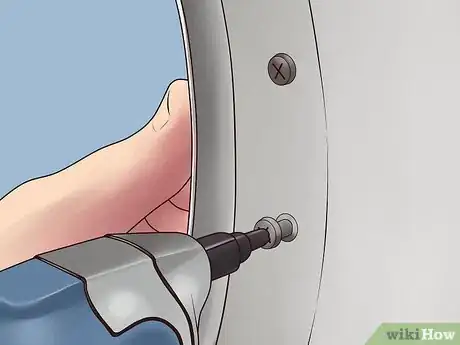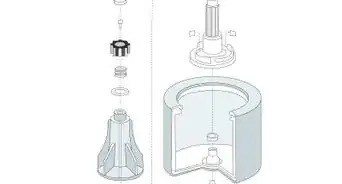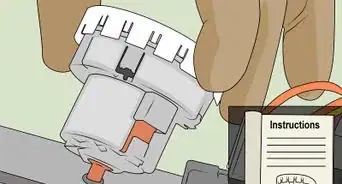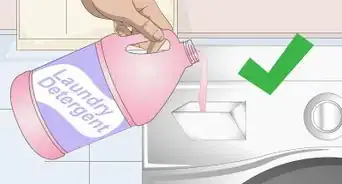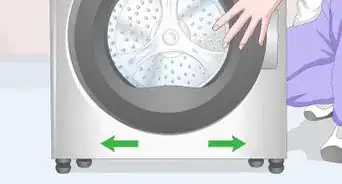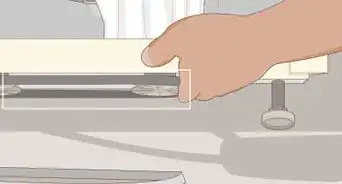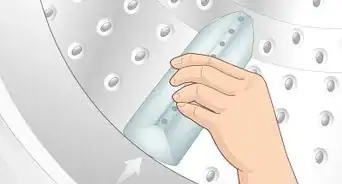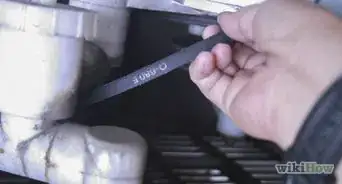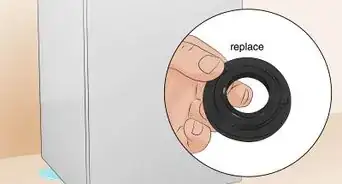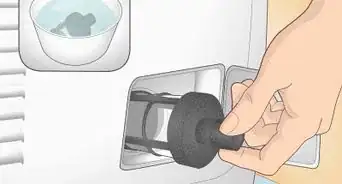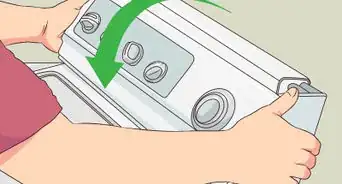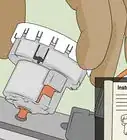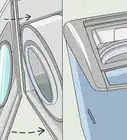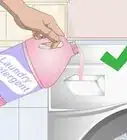wikiHow is a “wiki,” similar to Wikipedia, which means that many of our articles are co-written by multiple authors. To create this article, 10 people, some anonymous, worked to edit and improve it over time.
wikiHow marks an article as reader-approved once it receives enough positive feedback. In this case, 87% of readers who voted found the article helpful, earning it our reader-approved status.
This article has been viewed 412,252 times.
Learn more...
The rubber door seal on front-loaded washers will eventually develop mold, tear, or crumble apart. Purchase a new seal made exactly for your washing machine model, and you can replace it yourself. This is a fairly straightforward job on some models, but on some models, especially ones without a removable front panel, it can take several frustrating hours for a home repairman.
Steps
Removing the Old Seal
-
1Unplug the washing machine. Unplug the washing machine, so there is no possibility of injury from accidentally turning it on.
-
2Unscrew the front panel if possible. This is not possible on all washing machine models, and can be an involved process on others. Look up your model online with the query "remove front panel" to save yourself the frustration of figuring it out for yourself, or look for screws in the following places, continuing down the list if the front panel still won't come off with a good tug:
- The front panel itself, or the sides and base of the machine near the front panel.
- Remove the detergent dispenser and look for a screw behind it.[1]
- Detach the kick panel (below the large front panel) and any other smaller panels on the front. Some kick panels can only be detached after pulling open the filter with a flat-head screwdriver, then detaching the drain hose.
- Unscrew the lid and look for screws beneath it attaching the front panel.
Advertisement -
3Handle a machine without a removable front panel. If the front panel is not removable on your model, you'll have to do the job through the front opening. There are a few things you can do that give you more room to work:
- Unscrewing and removing the lid.[2]
- Unscrew the door hinge, if possible.
- Setting the machine carefully on its back, so the drum drops slightly down, away from the door.
-
4Remove the outer retaining band. Most washing machines have a small band flush against the outer edge of the rubber door seal. Pry this away with a flat-head screwdriver, then pull it entirely off the seal.[3]
-
5Fold the door seal into the washing machine. Pry the rubber door seal off the edge of the drum using your fingers or a flat-head screwdriver. Fold it off the edge and into the drum to access the inner retaining band underneath it. If you feel any resistance, stop and locate any clips holding the clamp in place. Clips can usually be removed with a screwdriver, either by removing the screws holding them in place, or by prying them off with a flat-head.
-
6Remove the retaining spring or band. This part presses the rubber seal in place. Locate the screw or nut holding the spring in place, and loosen it so the seal can be unhooked and removed. You may need to use one of the following techniques to access the screw:
- Unscrew the lid of the washing machine and come in from the top.
- Remove the front panel of the washing machine, then unbolt the large, round counterweight surrounding the drum.[4]
- In rare cases, the clamp band has no tension adjustment, and can be pushed off using a flat-head screwdriver or fingers. Start from the bottom and work your way around the drum in both directions.
-
7Note the position of the drain holes. Look for small drain holes near the bottom of the seal. Your new door seal should have the drain holes in a similar position to allow water to drain correctly.
-
8Pull off the seal. Pull the seal away from the lips of the drum to remove it. Some door seals are glued in place, but these can still be removed with a strong tug.
- On some models, the door lock also has to be unscrewed before the seal can be pulled off. Take note of the door lock position before you remove it, since you'll have to orient it in the same position after installing the new seal.
Putting in the New Seal
-
1Wipe the exposed area with a damp cloth. Before you put in the new seal, remove all grime and mold from the attachment area using a damp cloth.
-
2Decide whether to use lubricate or sealant . Unless your seal came "pre-lubricated," you can rub the lip with a little dishwashing liquid to make it easier to fit on. If the seal is not lubricated, you have the option of attaching it more firmly using a specialized adhesive for rubber door seals. This is usually not necessary, unless the seal needs to be glued to a drain hose.[5]
-
3Align the new door seal over the drum. Fit the door seal on, working the inner lip over the drum. Make sure to line the seal up so the drain holes are at the bottom, near where the previous seal's drain holes were. There will often be a mark, such as a triangle, on both the door seal and the machine. Line these up when attaching the seal.
-
4Fit the inner spring or band back on. Fold the new door seal in to the drum again. Hook the spring or band back together, then pull it on over the seal. Tighten it again using a screwdriver or wrench.
-
5Fit the outer lip and band over the outer rim. If you have removed the counterweight or front panel, replace them first. Next, pull out the door seal again and hook the outer lip over the outer groove. If there was an outer retaining band, fit this over the outer lip and press tightly to reattach it.
-
6Reattach all other parts. Screw back on the front panel, door, lid, or any other parts you had to remove to get at the door seal. Plug in the washing machine.
- Consider running the washing machine on empty while supervised, to check for leaks. If the door leaks, you'll need to disassemble it and check that all parts are firmly attached.
Community Q&A
-
QuestionMy washing machine exploded last night. It is literally in pieces. What should I do?
 PearlbelleTop AnswererIf it is literally in pieces, your chances of savaging it are slim to none. You'll likely have to purchase a new washing machine, in which case you might find this article helpful: how to buy washing machines.
PearlbelleTop AnswererIf it is literally in pieces, your chances of savaging it are slim to none. You'll likely have to purchase a new washing machine, in which case you might find this article helpful: how to buy washing machines. -
QuestionWhy is there water in the door of my Bosch Maxx washing machine?
 Community AnswerThere is probably damage to the seal on the door of your machine. Look at the seal and see if you can find where it is broken. You might be able to patch it up temporarily, or just call a technician to come out and replace the seal.
Community AnswerThere is probably damage to the seal on the door of your machine. Look at the seal and see if you can find where it is broken. You might be able to patch it up temporarily, or just call a technician to come out and replace the seal. -
QuestionThe metal band for the door seal looks far too small to get over the outer rim. I can get it on if the rubber seal isn't in place, but after the seal is on it will not fit. How do I get this metal band to fit?
 Community AnswerMake sure you have the correct seal for your exact make and model of washing machine. The band will be tight to give a good seal, and it will usually be a piece of wire that is linked into a circle by a spring. The spring ensures there is some "give," and it does take a bit of force to get it on. Be careful when fitting it not to punch a hole in your new seal, though! It should fit if you have the correct seal.
Community AnswerMake sure you have the correct seal for your exact make and model of washing machine. The band will be tight to give a good seal, and it will usually be a piece of wire that is linked into a circle by a spring. The spring ensures there is some "give," and it does take a bit of force to get it on. Be careful when fitting it not to punch a hole in your new seal, though! It should fit if you have the correct seal.
Things You'll Need
- Flat head screwdriver
- New door seal specific to your washing machine model
- Dishwashing detergent (if new seal is not pre-lubricated)
- Adhesive labeled suitable for washing machine door seals (optional unless seal is attached to drain hose)
- Wrench (for some models)
- Phillips head screwdriver (for some models)
Warnings
- Disconnect your washing machine from the power supply.⧼thumbs_response⧽
References
- ↑ http://www.ransomspares.co.uk/washing-machine-repair/how-to-replace-washing-machine-door-seal.htm
- ↑ http://www.ransomspares.co.uk/washing-machine-repair/how-to-replace-washing-machine-door-seal.htm
- ↑ http://www.ukwhitegoods.co.uk/help/fix-it-yourself/washing-machine-washer-dryer/2828-washing-machine-a-washer-dryer-door-seals-or-gaskets.html
- ↑ http://www.ransomspares.co.uk/washing-machine-repair/how-to-replace-washing-machine-door-seal.htm
- ↑ http://www.ukwhitegoods.co.uk/help/fix-it-yourself/washing-machine-washer-dryer/2828-washing-machine-a-washer-dryer-door-seals-or-gaskets.html
About This Article
To replace a washing machine door seal, first pry off the door’s outside rubber band. Then, loosen the screw or nut holding the seal in place, and pull off the old seal. When you’re ready to put on the new seal, start by lubricating it with some dishwashing liquid, which will make it easier to fit on. Next, fit the new seal on, making sure to line the drain holes up with the bottom of your machine. You can then tighten the screw or nut to secure the spring or band holding the new seal. Finally, replace the door’s outside band over the new seal. To learn how to access the seal through your machine’s front panel, scroll down!
